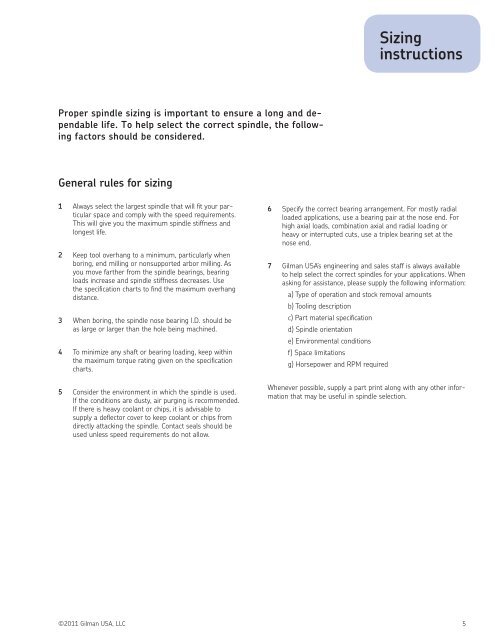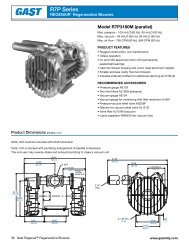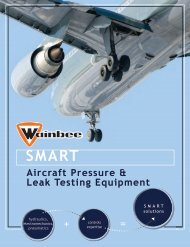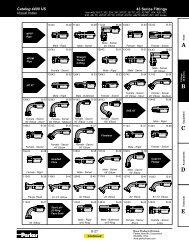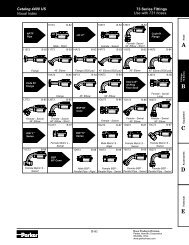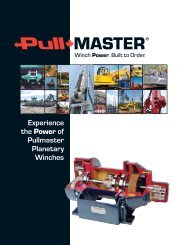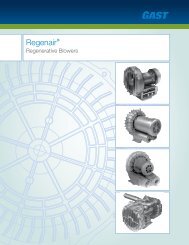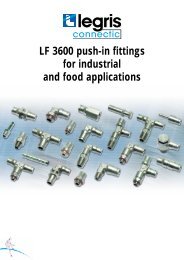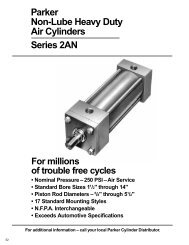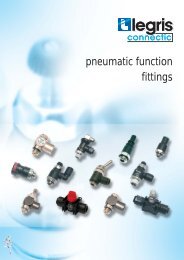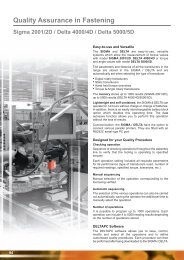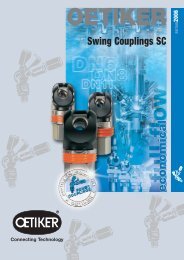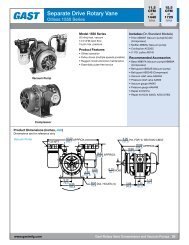You also want an ePaper? Increase the reach of your titles
YUMPU automatically turns print PDFs into web optimized ePapers that Google loves.
SizinginstructionsProper spindle sizing is important to ensure a long <strong>and</strong> dependablelife. To help select the correct spindle, the followingfactors should be considered.General rules for sizing1 Always select the largest spindle that will fit your particularspace <strong>and</strong> comply with the speed requirements.This will give you the maximum spindle stiffness <strong>and</strong>longest life.2 Keep tool overhang to a minimum, particularly whenboring, end milling or nonsupported arbor milling. Asyou move farther from the spindle bearings, bearingloads increase <strong>and</strong> spindle stiffness decreases. Usethe specification charts to find the maximum overhangdistance.3 When boring, the spindle nose bearing I.D. should beas large or larger than the hole being machined.4 To minimize any shaft or bearing loading, keep withinthe maximum torque rating given on the specificationcharts.5 Consider the environment in which the spindle is used.If the conditions are dusty, air purging is recommended.If there is heavy coolant or chips, it is advisable tosupply a deflector cover to keep coolant or chips fromdirectly attacking the spindle. Contact seals should beused unless speed requirements do not allow.6 Specify the correct bearing arrangement. For mostly radialloaded applications, use a bearing pair at the nose end. Forhigh axial loads, combination axial <strong>and</strong> radial loading orheavy or interrupted cuts, use a triplex bearing set at thenose end.7 <strong>Gilman</strong> <strong>USA</strong>’s engineering <strong>and</strong> sales staff is always availableto help select the correct <strong>spindles</strong> for your applications. Whenasking for assistance, please supply the following information:a) Type of operation <strong>and</strong> stock removal amountsb) Tooling descriptionc) Part material specificationd) Spindle orientatione) Environmental conditionsf) Space limitationsg) Horsepower <strong>and</strong> RPM requiredWhenever possible, supply a part print along with any other informationthat may be useful in spindle selection.©2011 <strong>Gilman</strong> <strong>USA</strong>, LLC5


